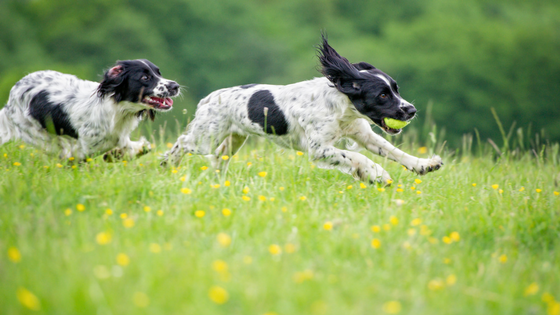
Often times, dog owners can feel angry or frustrated when their dog does not consistently come when called. The truth is, this is a difficult skill for dogs to acquire because we are often asking them to ignore their natural instincts. There is a way around this, but it requires conscious effort, and making sure your dog associates returning back to you as the most fun, rewarding thing in the world. Here’s how:
Step One: See things from your dog’s perspective
If you feel like you've tried everything, but are not seeing success with recall, it may be because your actions are inadvertantly teaching your dog not to come. Let me explain.
If your dog gets away from you, your instinct is to chase your dog to catch up with them. Unfortunately for you, your dog sees this as a game of chase and is overjoyed with excitement. When you finally catch up with you dog, what is your reaction? It’s likely that you react sternly and even “punish” your dog for not behaving. But your dog? Your dog is thinking, “Not only is the fun over, but now I’m in trouble. I better not let them catch me next time.” By now, your dog is learning that these actions are unsafe, and is less likely to come to you in the future.
Step Two: Positive interactions
Your dog is always learning. That’s why it's essential to remember that every interaction is a training session. As early as possible, set up exercises with your dog that will reinforce recall as a positive interaction.
Be aware of how you are responding to your dog during these sessions to make you aren’t accidently teaching your dog the wrong thing. For example, if your dog is out playing in the yard, and you call him to “come” to you, and when he does, you immediately put him inside the house and leave for work, you may be creating a negative interaction. Or, if you dog comes to you and you immediately take away his toy, or the ball in his mouth, he isn't going to feel that great about recall. You can see how your dog may be learning that coming to you is likely not in his best interest.
Step Three: Practice
As a rule of thumb, training should start with little distractions; like in a small space in your home. Once your dog has mastered one room, try another room. Then practice while he is chewing his favorite bone, or playing with another family dog. The first step is to practice recall in distraction-free environments and gradually add in more difficult situations. Pretty soon, your dog will be able to practice outdoors, or at the dog park.
To practice, grab a few tasty treats, and step away from your dog. Call your dog using the command, "Come!". If your dog does not approach you, try running from him so he begins to chase you. Once your dog gets to you, it is very important that you treat this as the best thing he could have done. This means, lots of praise, lots of treats, and lots of love. Practice this randomly a few times a day and then add distractions gradually.
Usually extra yummy treats will always work in your favor! Or, if your dog is not treat motivated, or is losing interest, try his favorite toy. How well your dog catches on depends on how consistently you practice and how valuable the rewards are.
Try it out, and let us know how it works!
For more tips and tricks, follow Wagz on Facebook.